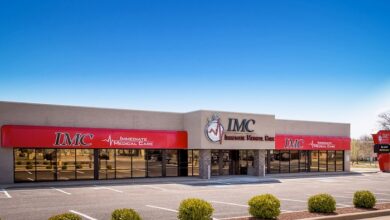Mastering the Average Handle Time Formula: A Comprehensive Guide

Measuring and optimizing Average Handle Time (AHT) is vital for contact centers seeking scalable efficiency. AHT is an average of the total time taken to handle a contact for a customer, encompassing everything from the initial contact to post-contact processing. AHT is a remarkably clear and revealing metric, giving insight into not just individual agent productivity but also into process bottlenecks and operational effectiveness across the various channels of a contact center (phone, chat, email, etc.).
It is critical to balance AHT with service quality: the ultimate goal is to reduce handle time while not compromising on resolution or customer satisfaction. Contact centers that have mastered this combination and achieved strategic improvements like training, workflow enhancements, and intelligent automation are now enjoying speed alongside consistency.
This guide tells you how to calculate average handle time formula accurately, how to set realistic benchmarks, and how to condition and influence factors to AHTs liking without compromising quality.
What Is Average Handle Time and How Is It Calculated
AHT gauges how long, on average, it takes to fully settle an interaction. This consists of measuring time when the agent is actually talking with the customer, time when the customer is on hold, and time when the agent is doing wrap-up between the customer and the next one waiting in queue. The standard formula:
- Total Talk Time + Total Hold Time + Total After‑Call Work Time) ÷ Total Number of Interactions
This encompasses each phase of resolution; customer discourse, time spent on hold, and admin tasks completed post-interaction. For email or chat discourse with customers, time on hold may equal zero, but the same formula applies.
Why Average Handle Time Matters to Contact Centers
Average handle time formula provides essential intelligence on workforce efficiency, customer experience, and cost control. It informs staffing and scheduling decisions by showing how much time agents, on average, spend per interaction.
When you look at AHT over time, certain trends can tell you when you need to train staff better or identify problem areas in your processes that aren’t working. When you use AHT along with metrics like customer satisfaction or first-contact resolution, it can also show when you are prioritizing speed over care.
Industry Benchmarks and Realistic Target Setting
AHT benchmarks are not at all consistent across industries and service types. Yet it is commonly measured in some service areas, such as retail or e-commerce, in which handle time might range from about 4 to 6 minutes. For more complicated interactions in telephone banking, AHT might range from about 6 to 10 minutes. Longer times are typical in regulated or very complex sectors.
To set impactful targets, one must delve into the usual call typology, the resolution workflows, and the customer experience they expect. Call centers that focus on personalized service may be able to afford a higher average handle time, as long as they can ensure strong customer satisfaction.
In contrast, high-volume support operations may prioritize a somewhat leaner AHT while using a combination of automation and additional training to ensure that their personnel can serve the customer effectively.
Strategies to Improve AHT Without Sacrificing Quality
Making AHT better doesn’t mean just making the process go faster; it requires you to create workflows that are inherently more supportive of advisors, and to give those advisors better tools. Here are some key things to help make that happen:
- Enhanced training and induction
- Call scripts and decision trees that adapt to context
- Knowledge base centralized
- Reducing transfers and hold time
- After-Call work automation
Platforms that incorporate artificial intelligence to assist agent offer a whole new set of tools. Unlike with traditional CRM platforms, which mainly just provide a database of customer interactions to work with, AI platforms can actually make real-time recommendations to human agents on the phone, moving interactions forward efficiently without compromising quality or compliance.
Using an Efficient Average Handle Time Formula Provides a Competitive Advantage
Average Handle Time isn’t about recording fast interactions at any cost. It’s about refining the systems so agents resolve issues confidently, effortlessly, and effectively. Contact centers can optimize both productivity and customer experience when they calculate AHT accurately, benchmark against relevant industry standards, and deploy strategic improvements.
When contact centers understand and manage AHT in balance with quality metrics, it’s a powerful indicator of service excellence and operational efficiency.




